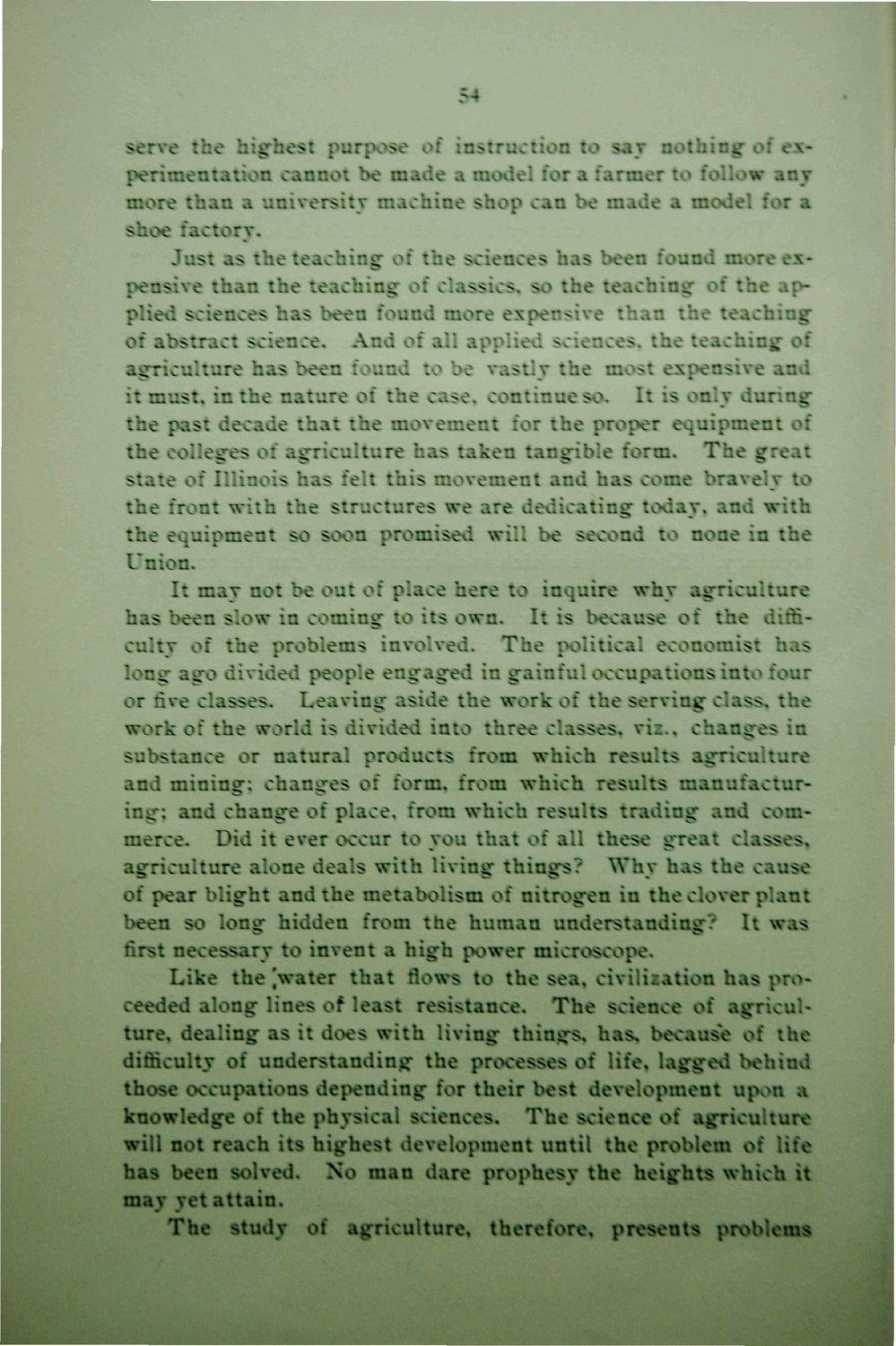| |
| |
Caption: Dedication - Ag Building
This is a reduced-resolution page image for fast online browsing.

EXTRACTED TEXT FROM PAGE:
54 serve the highest purpose of instruction to say nothing of experimentation cannot be made a model for a farmer to follow any more than a university machine shop can be made a model for a shoe factory* Just as the teaching of the sciences has been found more expensive than the teaching of classics* so the teaching 1 of the applied sciences has been found more expensive than the teaching of abstract science* And of all applied sciences, the teaching of agriculture has been found to be vastly the most expensive and it must, in the nature of the case, continue so. It is only during the past decade that the movement for the proper equipment of the colleges of agriculture has taken tangible form. T h e great state of Illinois has felt this movement and has come bravely to the front with the structures we are dedicating today* and with the equipment so soon promised will be second to none in the Union* It may not be out of place here to inquire why agriculture has been slow in coming to its own* I t is because of the difficulty of the problems involved* T h e political economist has long ago divided people engaged in gainful occupations into four or five classes* Leaving aside the work of the serving class* the work of the world is divided into three classes* viz.. changes in substance or natural products from which results agriculture and mining; changes of form* from which results manufacturing: and change of place* from which results trading and commerce. Did it ever occur to you that of all these great classes* agriculture alone deals with living things? Why has the cause of pear blight and the metabolism of nitrogen in the clover plant been so long hidden from the human understanding? It was first necessary to invent a high power microscope* Like the jwater that flows to the sea* civilisation has proceeded along lines of least resistance* T h e science of agriculture, dealing as it does with living things* has, because of the difficulty of understanding the processes of life* lagged behind those occupations depending for their best development upon a knowledge of the physical sciences. T h e science of agriculture will not reach its highest development until the problem of life has been solved. No man dare prophesy the heights which it may yet attain* T h e study of agriculture* therefore, presents problems
| |